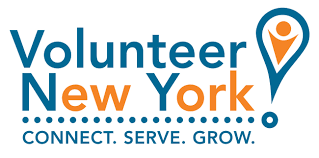The Westchester businessperson of the near future may well be able to hop a train to Albany for a morning meeting and be back in the office by lunchtime. Or he or she may be able to head up to Boston or Buffalo without having to stay overnight and without driving for hours or dealing with airport security.
At a national conference held in New York City last week, the Northeast corridor of Boston, Washington and New York and the Empire corridor of New York City, Albany and Buffalo were among the main candidates in discussions around building a national high-speed rail system.
High Speed Rail 2010, held at the New Yorker Hotel on Nov. 14-16 and presented by the US High Speed Rail Association, brought together business and political leaders from around the country, including Ray LaHood, the U.S. transportation secretary. The Obama administration has identified a national high-speed rail passenger system as one of its priorities, citing less-crowded airways as one benefit. According to the White House, the 486-mile Empire corridor would be funded by seven interrelated projects, including construction of new track, signaling and interlocking improvements.
New York State Senate President Malcolm A. Smith, who attended the conference, has been working on the issue for two years, visiting China and India and currently serving as co-chair of the High Speed Rail Working Group of the National Conference of State Legislatures. Audibly excited in describing the conference as “overwhelmingly successful,” Smith declined to comment on whether New Rochelle, Croton (both of which currently accommodate Amtrak trains), or any other Westchester location would have a stop on a high-speed line, but he said having a commuter rail line connecting to high-speed rail would certainly be a priority. While deferring to “engineers and city planners” on specific questions such as that, he did mention that a direct Westchester stop would be a possibility.
Gov. David A. Paterson, who spoke at the conference, signed a bill this year that established a New York State Planning Board to work on the Northeast and Empire rail corridors.
Smith said he expects the board to act within two years as far as establishing the entity or entities that will oversee the project, with construction possibly starting in five years. He also said that Gov.-elect Andrew Cuomo, who was originally scheduled to speak, has stated that the high-speed rail system will be “a high priority.”
State Sen. Andrea Stewart-Cousins said, “I think everybody is extremely excited” at the prospect. She said it would strengthen the region as a business hub, “truly creating one New York,” and that the participation of powerful New Yorkers would “ensure that we lose no momentum, that we underscore our ability and interest that this will happen.” She also deferred on the question of stops for Westchester County, but she did say she would fight for at least one if it proves to be feasible.
Washington-based US HSR is an organization that describes itself as an independent, nonprofit trade association “chartered to organize and mobilize the industry with a shared vision for a 21st century, 17,000-mile national high speed rail system built in phases for completion by 2030.”

















